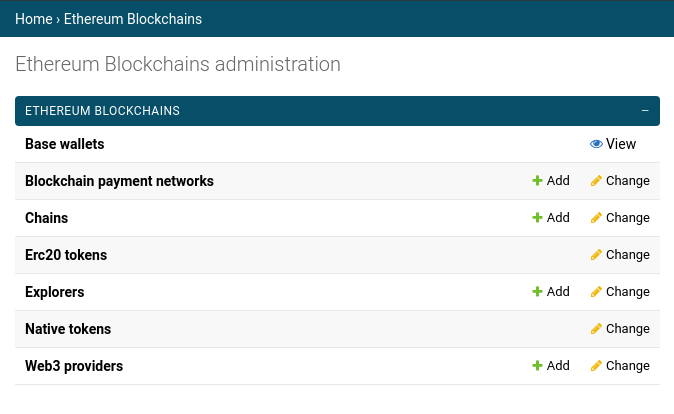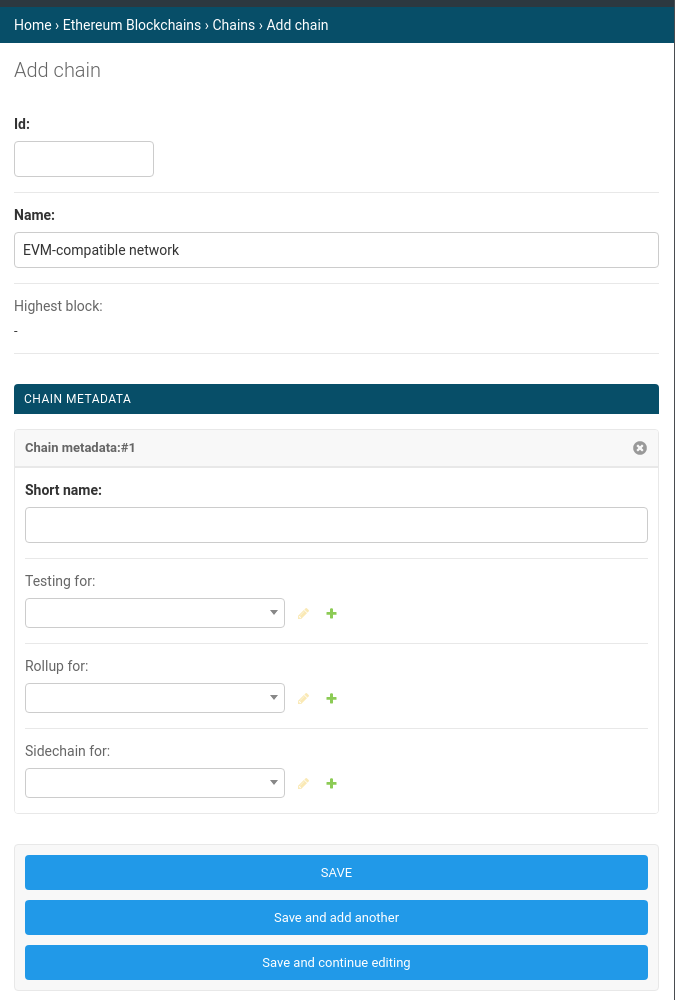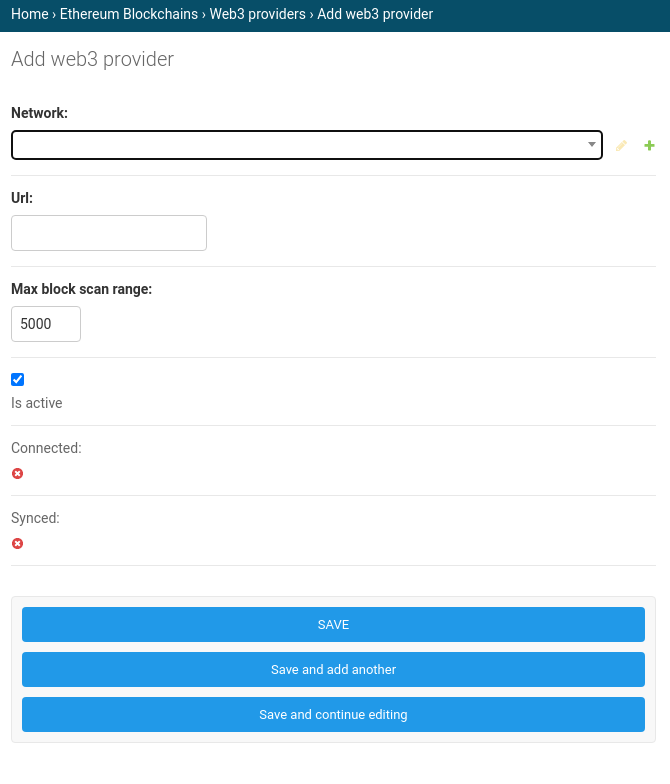Connect to Ethereum-compatible Blockchains
You can use Hub20 to interact with any EVM-compatible blockchain that has nodes that follows its JSON-RPC protocol - e.g, Binance Smart Chain, xDAI, Polygon/Matic and also the Layer-2 rollups such as Arbitrum and Optimism.
Loading all chains from chainlist.org
If you just want to get all information from the most popular
blockchains, you can start by loading the list compiled by
Chainlist. The load_chain_list command is provided.
docker-compose exec web django-admin load_chain_list
django-admin load_chain_list
Loading information about specific/custom blockchains
To add a new chain, you can use the register_blockchain command:
docker-compose exec web django-admin register_blockchain --id <chain_id> --name <name> (--provider-url <url_of_web3_provider>)
django-admin register_blockchain --id <chain_id> --name <name> (--provider-url <url_of_web3_provider>)
Managing Blockchains and providers through the admin
To add more information about the chains or the nodes that you want to use to connect to these blockchains, you will need to use the admin site.
The main admin view
The "Ethereum Blockchains" section on the admin main dashboard is where you can manage anything related to connecting to EVM-compatible blockchains.

Add a new chain to the database
By clicking on the 'add' link on the chain section, you will be presented with a form where you can provide the data about the chain.
If you are adding a blockchain that is already public and used by
other people, you should use a name that is most recognizable. Chain
IDs are MUST be unique. The short name attribute is also meant to
be an unique identifier, but no software still uses or enforces it at
any level. If you are not sure of what information to provide here,
you can refer to Chainlist.
You might also be interested in providing some metadata, i.e, if you want to indicate that this chain is a test network, or if it is a sidechain that connects to "main" chain (like Gnosis/xDAI), or if it is a roll-up (like Optimism/Arbitrum)

Add a new provider
To add a new provider, simply indicate the URL of the node. If your
node requires some form of authentication, you can put the credentials
in the <username>:<password>@<host> format.
